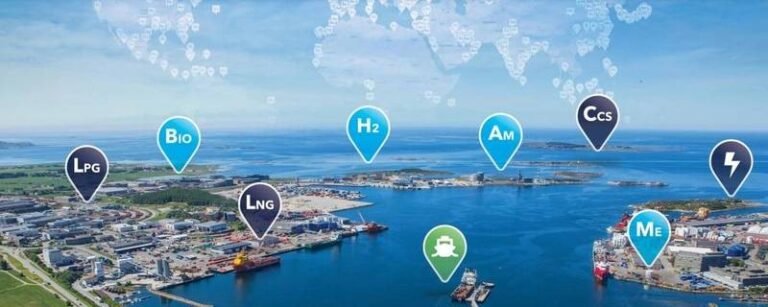The Rise of Alternative-Fueled Vessels: A July 2025 Report
In July 2025, the maritime industry witnessed a significant uptick in the orders for alternative-fueled vessels, signaling a growing trend towards sustainable shipping solutions. According to the latest data from DNV’s Alternative Fuels Insight (AFI) platform, a total of 28 new orders for alternative-fueled vessels were placed during this period.
LNG Dominance and Diversification
Among the 28 orders, LNG emerged as the dominant fuel choice, accounting for 22 vessels. The majority of these orders were concentrated in the container segment, with 19 vessels on record. Additionally, there were two orders for LNG-fueled tankers and one for a research vessel, showcasing the versatility of LNG as a marine fuel.
Following closely behind LNG, methanol secured three new orders in July. These orders included two bulk carriers and one offshore vessel, highlighting the growing interest in methanol as a viable alternative fuel option for the shipping industry.
Ammonia Emergence
July also saw a notable development in the form of two orders for ammonia-fueled gas carriers. This indicates a shift towards exploring ammonia as a potential green fuel for maritime transport. Furthermore, the addition of the first-ever order for an ammonia bunker vessel underscores the industry’s commitment to building supporting infrastructure for long-term fuel strategies.
Industry Resilience and Investment
Jason Stefanatos, Global Decarbonization Director at DNV Maritime, emphasized the industry’s resilience and proactive approach towards sustainability. He stated, “July’s data reinforces what we observed in the first half of the year: the alternative-fueled vessel market is showing resilience. Owners are not just experimenting; they’re investing in scalable, compliant solutions.”
Stefanatos further highlighted the significance of the ammonia bunker vessel order, stating that it indicates a strategic alignment of infrastructure with future fuel demands. With continued activity in LNG and methanol bunker vessel orders, the maritime sector is actively positioning itself for a transition towards cleaner fuels.
Conclusion
The surge in orders for alternative-fueled vessels in July 2025 reflects a growing momentum towards sustainable shipping practices. As the industry embraces diverse fuel options such as LNG, methanol, and ammonia, it sets a course towards a greener and more environmentally conscious future. With ongoing investments and strategic decisions, the maritime sector is paving the way for a cleaner and more sustainable shipping industry.

